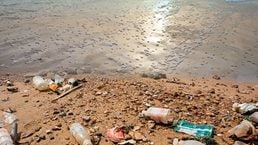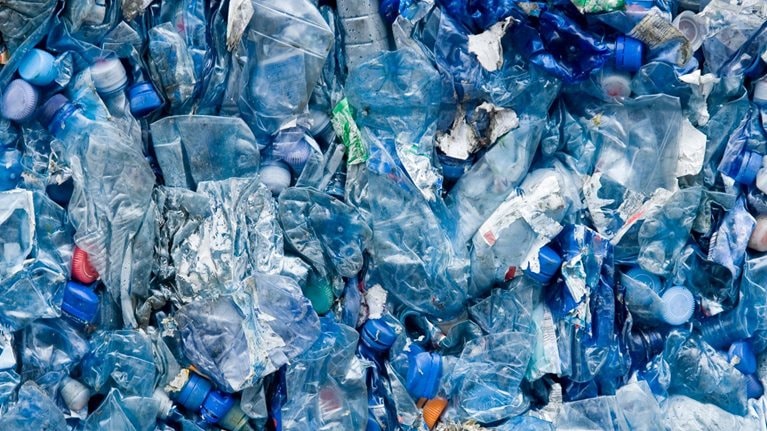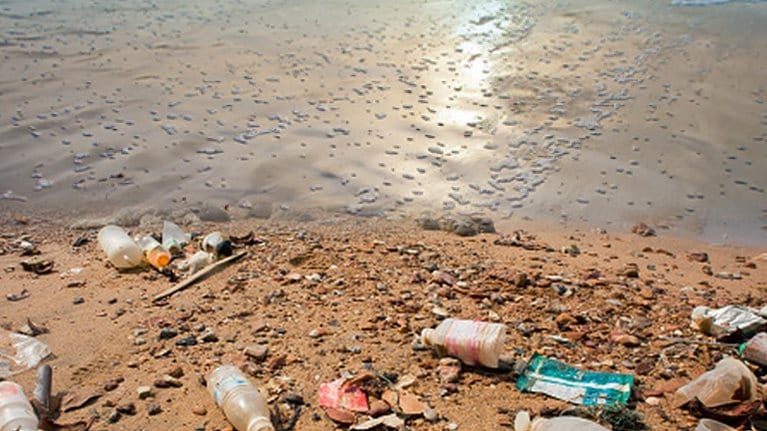If plastics demand follows its current trajectory, global plastics-waste volumes would grow from 260 million tons per year in 2016 to 460 million tons per year by 2030, taking what is already a serious environmental problem to a whole new level. In the face of public outcry about global plastics pollution, the chemical industry is starting to mobilize on this issue. Our recent article “No time to waste” showed how industry leadership is moving beyond the use-once-and-discard approach—under which the plastics industry has grown up—and embracing an expanded definition of product stewardship that includes dealing with plastics waste. As we underlined in that article, this is not only what society demands, and is becoming a condition for the industry to retain its license to operate, but could also represent an important and profitable new business opportunity.
Stay current on your favorite topics
That last insight is built on our comprehensive assessment of where future global waste flows will come from, how they could be recycled, and what economic returns this activity could offer—research that has filled a major gap in the public debate. In this article, we outline a scenario for the plastics industry through which 50 percent of plastics worldwide could be reused or recycled by 2030—a fourfold increase over what is achieved today—and that also has the potential to create substantial value. Following that path, plastics reuse and recycling could generate profit-pool growth of as much as $60 billion for the petrochemicals and plastics sector, representing nearly two-thirds of its possible profit-pool growth over the period. We also discuss the levels of support that will be needed more broadly across society, including from regulators, major plastics users such as consumer-packaged-goods companies, and consumers, to get to this outcome.
For petrochemicals and plastics companies—and by extension the chemical industry, since plastics production accounts for well over one-third of the industry’s activities—this presents an array of threats and opportunities, and we outline the kinds of strategic questions they will need to evaluate and the choices to make.
Modeling a virtuous circle of plastics recycling worldwide
Our research shows that just 12 percent of plastics waste is currently reused or recycled (Exhibit 1). The fact that the great majority of used plastics goes to incineration,1 landfills, or dumps, means that these materials are lost forever as a resource, despite plastics’ potential for reuse and recycling. Plastics production requires substantial capital investment and a substantial carbon footprint. Reusing plastics not only reduces these investment needs but can also contribute to reducing total industrial carbon emissions.

Images of plastics waste across the globe have contributed to a consumer backlash that is translating to regulatory moves to ban or restrict plastics use in numerous geographies, notably the European Union. Marine plastics pollution has been a powerful force to mobilize public opinion, and our colleagues have suggested ways to address the problem. When considering the potential for plastics-waste recycling, however, marine plastics pollution could best be understood as the highly visible tip of the iceberg.
What the chemical industry—along with major consumer industries, the waste industry, and indeed society, more broadly—has been lacking is a clear picture of a path forward under which the volumes of plastics being discarded could be recaptured and reused.
Also lacking has been a full perspective on where the majority of waste will come from and which recovery and recycling technologies offer the biggest potential.
We address this gap with a comprehensive model of global plastics-waste generation, the different approaches to plastics reuse and associated recycling technologies, and their economics. Our reference case scenario assumes an oil price of $75 per barrel. We’ve also explored lower and higher price scenarios and their correspondingly smaller and larger potential profit pools, as well as different societal approaches to recycling, since these factors all have a major influence on the feasibility of plastics recycling. (For more information on the model, please see sidebar “About the research.”)
Technologies to handle all polymer families: Tapping the potential
Let’s start with a look at the enabling technologies that underpin these projections—technologies that exist or are recognized as technically feasible and could make possible more plastics reuse. These include a massive expansion of mechanical recycling volumes and the launch on an industrial scale of two relatively new technologies—monomer recycling and reprocessing of plastics waste to make liquid feedstock in a cracking-type process, known as pyrolysis.
Mechanical recycling is already established as a sizeable business—if nowhere near the scale of the mainstream petrochemicals and plastics industry—in many of the world’s developed economies, and it’s focused on polyethylene terephthalate (PET), high-density polyethylene (HDPE), and polypropylene recycling. Contrary to commonly held assumptions that waste management is simply a cost burden for municipalities and taxpayers, there are many examples where mechanical recycling is already profitable, albeit often in selective applications or markets. This is because of its fundamentally different starting point from traditional plastics manufacture: mechanical recycling can generate new polymer without having to invest billions of dollars in steam crackers and other units to create petrochemical building blocks. Therefore, it starts out as a comparatively advantaged route to polymer production (Exhibit 2).

The mechanical-recycling technology can also be used for recycling many other polymers. But these businesses have not yet grown much due to constraints in collection of the other major-volume resins such as low-density polyethylene (LDPE). Our modeling suggests that LDPE and HDPE mechanical recycling has the potential to generate the largest profit pool through 2030, primarily reflecting expectations for continuing high profitability in the virgin polyethylene market due to the tight supply–demand outlook. Our projections suggest that mechanical recycling rates could increase from the current level of 12 percent of total plastics volumes to 15 to 20 percent2 of the much larger projected total plastics output by 2030, assuming oil prices of $75 per barrel. Under a scenario where oil prices move below $65 a barrel, the economics of mechanical recycling become more challenging; this pattern was seen following the 2015 fall in oil prices, and was a factor in slowing recycling efforts.
Would you like to learn more about our Chemicals Practice?
The second component is monomer recycling. Although it is inherently restricted in its application to condensation-type polymers such as PET and polyamide,3 monomer recycling has the potential to generate some of the highest plastics recycling profitability levels. Again, this is because monomer recycling can avoid the capital investments needed for steam crackers and aromatics plants, as well as the high-capital-cost plants required to make PET and polyamide intermediates.
Third, our analysis suggests that re-converting waste plastics into cracker feedstocks that could displace naphtha or natural-gas-liquids demand—most likely using a pyrolysis process to do this—also may be economically viable, and it is more resilient to lower oil prices, remaining profitable down to $50 a barrel. Pyrolysis4 is an invaluable technology to treat mixed polymer streams, which mechanical recycling technologies currently cannot handle. Pyrolysis also is an important back-up process to handle polymers that have exhausted their potential for further mechanical recycling. A number of pyrolysis players are coming forward, offering a range of facilities from large-scale plants with capacities of 30,000 to 100,000 metric tons a year to much smaller-scale modular units with capacity up to 3,000 metric tons a year.
Building a global picture
How could different regions contribute to worldwide value-creation growth? The modeling includes projecting the deployment of the most appropriate technology in geographies where it is needed and takes into account that some are still on a steep learning curve. The scenarios also incorporate an assessment of how waste collection and management will be able to ramp up. For example, most emerging-market countries lack infrastructure for sorting trash into different waste streams (and even in countries where human waste pickers salvage plastics, the volumes recovered are a small part of the total waste flow). As these countries build up their waste-management capabilities, the first step will be to separate the plastics waste from other wastes. Once this is achieved, pyrolysis of mixed plastics waste is likely to provide the most efficient way to process it, until capabilities are in place to separate different plastics. In the short to medium term, emerging markets are also likely to need to build incinerators to address their overall waste flows.
Not surprisingly, our projections for 2030 suggest China would represent the biggest potential profit pool—reflecting its position as the world’s biggest market for plastics use and biggest plastics-waste generator, as well as the fact that it has long had an established market for reused resin. Asia outside China will be the next biggest profit pool, a reflection of the massive projected demand growth in the region for plastics through 2030. In both the United States and Europe, redirecting plastics waste into plastics production via mechanical recycling or pyrolysis instead of abandoning it in landfills or incinerating it could generate sizeable profit pools.
Plastics-waste flows transformed
Based on these models, we project that plastics reuse could rise to as much as 50 percent of plastics production by 2030, assuming a $75-a-barrel oil price and an effective regulatory framework reinforced by supportive behavior from other industry stakeholders and consumers (Exhibit 3). This rate would still be lower than what the paper industry has achieved but would nevertheless represent a major step for the petrochemical and plastics industry.

To achieve a 50 percent recovery rate by 2030, the modeling suggests that waste-recovery capital investment of about $15 billion to $20 billion per year would be required. To put those figures in perspective, the global petrochemical and plastics industry has invested, on average, about $80 billion to $100 billion each year over the past decade.
Toward a new manufacturing landscape for the plastics industry
A reuse level of this kind would also profoundly affect new plastics production. By 2030, up to almost one-third of plastics demand could be covered by production based on previously used plastics rather than from “virgin” oil and gas feedstocks. This estimate is based on a high-adoption scenario, comprising a massive increase in mechanical recycling volumes, a takeoff in pyrolysis, and oil prices at around $75 per barrel.
Projecting to 2050 suggests that nearly 60 percent of plastics demand could be covered by production based on previously used plastics (Exhibit 4). This will substantially reduce the amount of oil required to cover global plastics demand, with projections suggesting oil demand running 30 percent lower than a business-as-usual scenario. This outcome would require revisions of recently published forecasts that show petrochemicals making the largest contribution to oil demand growth over the next two decades (see sidebar “A new relationship to oil?”).

What this could mean for petrochemicals and plastics players
Under the high-adoption scenario, the cost position of plastics-waste-based feedstocks—via mechanical recycling, monomer recycling, or reuse through pyrolysis or other feedstock supply—could potentially be so attractive that they could account for two-thirds of the profit-pool growth of the petrochemicals and plastics industry by 2030 (Exhibit 5).

We would like to underscore the repositioning of the industry that this change would represent. Over the past two decades, the petrochemical industry has seen a major part of its profitability growth come from accessing advantaged feedstock. Assuming the scenario conditions can be met, the ability to access and handle plastics waste would be a comparable key to success in the future, with plastics waste potentially becoming the next source of feedstock advantage for polymer production.
How should petrochemical and plastics companies position themselves for these possibilities, and what steps should they take to be able to capture a share of the potential profit pool?

Saving the ocean from plastic waste
First, chemical-company CEOs should acknowledge up front that resolving the plastics-waste issue is a long-term challenge that may not be resolved on their watch, but it is nevertheless one where they need to decide what steps to take in the long-term interest of their enterprise and of society. At the same time, they need to recognize this as a classic case of “strategy under uncertainty” in which they need to factor in potentially different outcomes and plan their strategies with the appropriate degree of flexibility.
Second, they need an understanding of how the position of their product portfolio is likely to evolve, under the different plastics-recycling scenarios. That will bring to the surface potential actions to take and investment opportunities, or conversely, problems to be addressed in their current portfolio.
Third—and this will be partly determined by what geographies they are active in and which polymers they make—companies must plan their moves around three areas of activity that will underpin future growth in plastics recycling. Plastics companies should work with OEMs and regulators to design uses of plastics that are straightforward to recycle, and push for levels of recycled content that will stimulate demand. Next, to assure a growing and high quality supply of waste to recycle, plastics companies need to get involved in waste-management technology improvements that will facilitate collection, sorting, and cleaning. Finally, plastics makers should support development of technologies and building of recycling infrastructure that will bring waste plastics back into the value chain.
The new to-do list
A number of no-regrets moves are coming into view. Establishing partnerships or identifying acquisition targets could help players gain access to needed technology or secure sufficient access to waste-plastics feedstock supply. In the case of technology, that may include investing in start-ups undertaking promising process development and collaborating with research institutes. In the case of feedstock, this could take the form of long-term supply agreements with municipalities, waste-management companies, landfill sites, and, in effect, any player with access to large quantities of plastics waste. Possible strategies could even include back integration, whereby a petrochemical company acquires or establishes a waste-collection operation.
Plastics companies may want to boost their investments in mechanical recycling operations to facilitate rapid expansion of their offering to include recycled resins. There have been some recent acquisitions of plastics-recycling companies in Europe by major petrochemical companies, a trend likely to continue.
Petrochemical and plastics companies have to be prepared to adopt a different business model, where they will have to source plastics-waste supply from a large number of scattered players rather than getting their raw materials in bulk from one source.
As our discussion above has laid out, certain regions, technologies, and polymers could be much more attractive than others. Companies will need to identify what their product-portfolio priorities should be, and what their regional focus should be.
As demand for plastics continues to grow worldwide, the imperative to put in place an effective system to handle the waste-plastics volumes that will be generated becomes all the more pressing. Our research shows that a development path could be established that could quadruple the amount of waste plastics going to reuse and recycling, to around 50 percent of the volumes produced. Getting there will require achieving an alignment of regulators and supporting conduct from major user industries such as consumer goods and automotive—and not least support from society more generally that relies on plastics daily. For the chemical industry the stakes are high. It has much to lose if the waste-plastics issue develops into widespread product bans and demand destruction. But it also has a lot to gain, through building a new recycling-based branch of the petrochemicals and plastics industry and tapping potential profit-pool growth.


